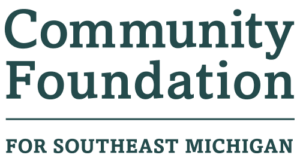
EDITOR’S NOTE: The X-waiver requirement, which is mentioned in this article, was eliminated in December 2022. Up-to-date information is available through SAMHSA and CA Bridge.
MOUD Leads Multi-Pronged Approach from Michigan Opioids Task Force
Throughout her extensive career as a public health professional, Dr. Joneigh Khaldun has been a champion for targeted actions to address the opioid epidemic. Dr. Khaldun recently resigned her position as Michigan’s chief medical executive and chief deputy director for health and human services. Previously, she served as Baltimore’s chief medical officer where she began her efforts to expand accessibility to medication for opioid use disorder (MOUD).

Dr. Joneigh Khaldun
“I was working on getting naloxone into the community and with medical providers on treatment access thatincluded medication,” said Dr. Khaldun. “When I started my career in Michigan in 2017 at the Detroit Health Department, I continued that work, and now here with the Michigan Department of Health and Human Services since 2019.”
As the state has heightened its focus on lessening the devastating impact opioids have had on Michigan’s families and communities, Dr. Khaldun has emerged as a staunch advocate for implementing collaborative, innovative, evidence-based strategies that yield measurable outcomes.
“We know that if a person survives an overdose, they’re likely to have another, and any one of those could be life threatening,” says Dr. Khaldun, who is also a practicing emergency medicine doctor. “We have a responsibility to make sure people have access to proven treatment options.”
Turning the tide of the opioid epidemic
According to the 2020 annual report produced by the Michigan Opioids Task Force in 2019, opioid overdoses killed 1,768 residents, an average of almost five people per day. It was amid this bleak reality that Gretchen Whitmer, the state’s governor, signed Executive Order 2019-18, establishing the task force. Charged with bringing the opioid crisis “under full and lasting control,” the 14-member group is an advisory body within the Michigan Department of Health and Human Services (MDHHS) and chaired by Dr. Khaldun.
The task force’s overarching goal is to develop a set of actions that will realize the governor’s goal of reducing opioid overdose deaths by 50 percent by 2025.
“Medication for opioid use disorder is an important part of the task force’s strategy. The way we’re going to reduce deaths is by making sure people have access to treatment,”says Dr. Joneigh Khaldun, Michigan’s former chief medical executive and chief deputy director for health and human services.
“Our role in medicine is to provide appropriate treatment. Supporting medication for opioid use initiatives through emergency departments is ideal because so many people access them,” she emphasizes.

Amy Dolinky
Expanding MOUD is only one component of the task force’s blueprint to achieve Governor Whitmer’s audacious goal. “The current state strategy has seven pillars, including prevention, treatment, harm-reduction, engaging criminal justice-involved and pregnant and parenting women populations, as well as data and equity initiatives,” explains Amy Dolinky, senior advisor, Michigan Opioids Strategy with the Michigan Department of Health and Human Services. She went on to say the work of the task force is guided by five values:
- Prioritize voices with lived experience.
- Promote evidence-based strategies backed by a strong body of research.
- Use data to inform strategy and track outcomes.
- Collaborate with departmental partners and external stakeholders on response actions.
- Remain action-oriented to address an ongoing crisis.
Legislation is key component in addressing Michigan’s opioid crisis
Since its formation, the task force has been instrumental in advancing key pieces of legislation that promise to improve treatment opportunities for people with opioid use disorder. Two bills will increase availability of MOUD in emergency departments and enhance referral to treatment. Through this legislation, hospitals that treat over 50 overdoses a year will receive funding to build capacity to offer medication. The bills build on existing work with the Community Foundation for Southeast Michigan’s Michigan Opioid Partnership to expand treatment in emergency departments, which started in 2018. Currently, 19 hospitals across nine health systems are participating in this effort.
“MOUD is an evidence-based treatment, and just like giving insulin to people with diabetes, we should absolutely be making medications like buprenorphine available to people with OUD,” says Dr. Khaldun. “That’s what this work is about.”
Additional legislation expanded Michigan’s naloxone standing order to allow community organizations to distribute the lifesaving overdose reversal drug. Previously, dispensation was limited to pharmacists.
“Our viral hepatitis and harm reduction teams can now get Naloxone to folks actively using substances as well as those who are moving into that space of recovery,” said Dolinky.
Emergency departments are critical access points for treatment
Emergency departments are essential partners in improving access to medication for opioid use disorder. They are often the first encounter with a health care provider a person in overdose has. Enabling and teaching doctors to proactively prescribe drugs that resolve withdrawal symptoms and reduce cravings is a powerful step toward getting people on the road to recovery.

Dr. Michael Danic
“The epidemic has gotten worse over the last year and can’t be ignored, but we don’t have adequate counseling or medication assisted programs,” says Dr. Michael Danic, head of Ascension Genesys Hospital’s inpatient treatment program in Grand Blanc, Michigan. Genesys is funded by the Community Foundation for Southeast Michigan in connection with the Michigan Opioid Partnership, a public-private collaborative including MDHHS and key philanthropic organization, that is helping implement emergency-department based MOUD programs in hospitals across the state.
“Physicians are aware of the problems opioids cause but treating addiction is extremely complex, and many don’t want to do it.” He says this has led the state to set up resources that incentivize health systems and providers while increasing their education and capacity. Free training for doctors seeking X waiver status, reimbursements for “take back” programs to get drugs off the street, and grants to support naloxone initiatives are among the programs Dr. Danic says are available to hospitals.
Dr. Danic has also noticed a growing number of state-wide collaborations coming together to address the opioid epidemic. Among them are Michigan Open Prescribing Engagement Network (MI OPEN), which is working with MDHHS to educate medical professionals on guidelines for safely prescribing pain medication.
The health department has also partnered with Michigan Collaborative Addiction Resources & Education System (MI CARES) to increase the number of addiction medicine and addiction psychiatry specialists in the state and build a provider network for patients with OUD. MDHHS and the Department of Licensing and Regulatory Affairs (LARA) have aligned to remove barriers to prescribing MOUD by decreasing regulation on medical providers and revising administrative rules governing telehealth as a treatment option.
“The rehabilitation world is very political, and the infrastructure is complicated,”says Dr. Michael Danic, head of Ascension Genesys Hospital’s inpatient treatment program in Grand Blanc, Michigan. “Our work with the Michigan Opioid Partnership and Community Foundation for Southeast Michigan is connecting us with groups like these who can help guide us to best practices.”
Making data-driven decision making possible
Strengthening the capacity of communities to prevent overdoses is paramount to the task force’s work. Ensuring those engaged in implementing effective strategies have access to accurate and timely data is critical to that goal. MDHHS is improving data collection from sources such as emergency departments, EMS responses, and medical examiner’s offices, making it easier to track drug overdoses and customize interventions.
With funding from the CDC, MDHHS through the task force recently launched the Michigan Overdose Data to Action Dashboard. The board’s tables display the most recent overdose death data available compared to the previous year by month. They also contain information about disparities. It is the culmination of the agency’s efforts to align numerous data sources to derive insights that direct the task force and inform policy makers and external stakeholders.
“The dashboard allows community-based organizations and local leaders to look at the data in their communities so they can tailor their prevention and treatment strategies accordingly,” explains Dr. Khaldun. “It’s a really important resource that people should know is available to them.”
Combating inequity and stigma
To foster the level of change needed to reduce opioid-related deaths, it is important to understand community needs as they relate to OUD. Inequity is a common driver of service gaps, especially in areas predominated by people of color and those that are rural. According to the task force’s 2020 annual report, the age-adjusted opioid overdose mortality rate fell by 16.9 percent for White residents but rose by 0.7 percent for Black. Additionally, American Indian populations face disproportionately high rates of mortality in the state. “We’ve also seen a 54 percent increase in the upper and northwest lower peninsulas,” says Dolinky.
To reach a space that is more equitable, the task force put in place a racial equity workgroup in July 2021. It will be responsible for looking at the state’s populations that may not be able to access services through current channels and need a different approach. “Making efforts to understand the different communities and meet them where they are will bring an equity lens to all the work we do,” says Dolinky.
Like inequity, stigma is also a barrier to service access. The task force is using public media campaigns to shift the narrative to one that is less judgmental of people with opioid use disorder and the medications available to treat the condition. The series of Facebook and Instagram ads and YouTube videos educate Michiganians about opioid risks, characteristics of OUD sufferers, harm reduction, and available services.
The most recent campaign, Change at Your Own Pace, featured real-life stories from people across Michigan sharing their personal experiences with substance use and benefits of harm reduction and other services. The testimonials emphasize that recovery is an individual process, and that people seeking freedom from opioid use are worthy of respect and empathy.
“The overarching goal of Governor Whitmer’s strategy is to create communities and neighborhoods and workplaces that support recovery,” says Dolinky. “We want everyone to have access to appropriate, affordable treatment that is equitable and celebrates their choices to become empowered.”
